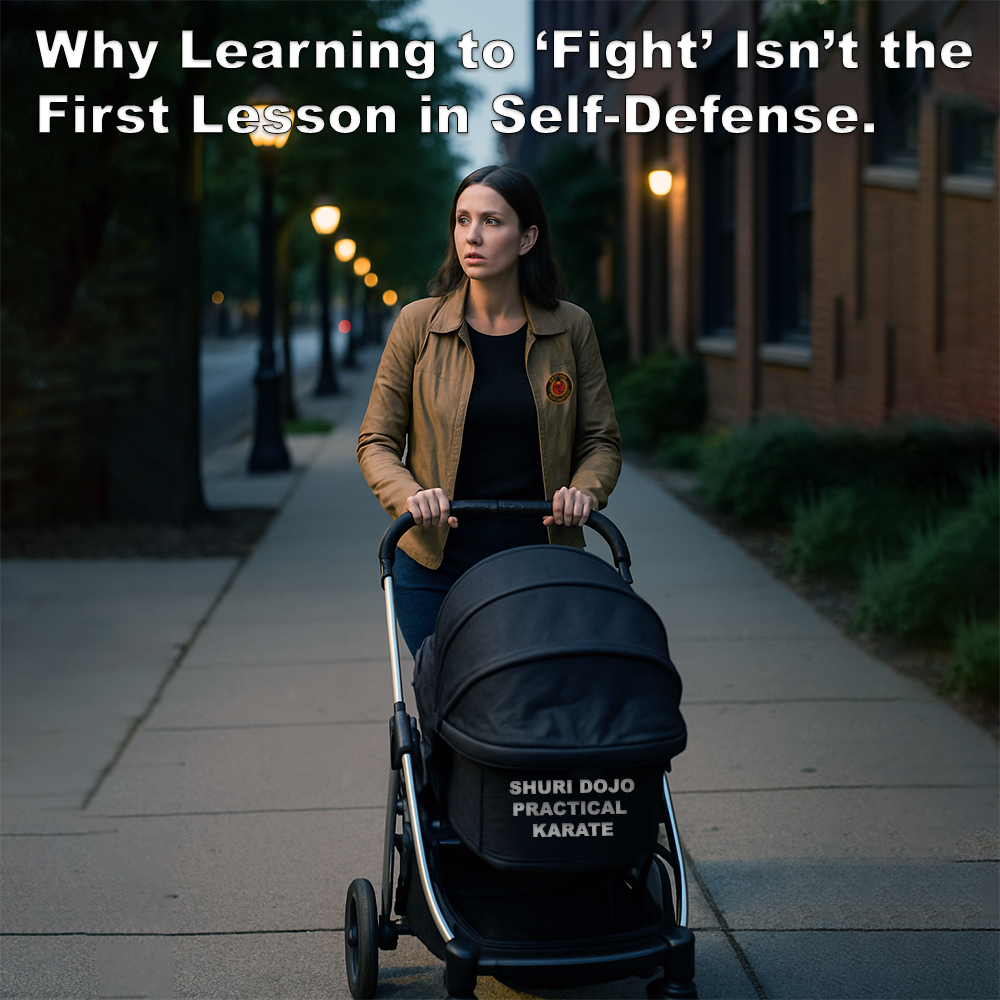
(Approx 2 minute 50 second read)
I was asked recently if I could help a new mother learn some self-defense.
.
She has a six-month-old child and she has no prior martial arts experience. On top of that, she’s working as well – so her days are full, her sleep is broken, and time for anything extra is in very short supply. From a reality-based perspective – how could I help her?
.
The answer has little to do with punching or kicking.
.
When someone has zero experience, the worst thing you can do is throw them into complicated movements or drills that don’t reflect the reality of their life.
.
The best place to begin is with mindset, awareness, and the sort of practical habits that don’t require years of training.
.
For a new mother, it’s not about learning how to fight. It’s about avoiding the need to fight in the first place. The most effective self-defense is to not be there when trouble happens. It’s a cliché, I know – but it’s the truth.
.
That begins with understanding how violence unfolds and how to reduce the chances of being in the wrong place at the wrong time. Both the ‘wrong place’ and the ‘wrong time’ are hugely important. Do you really need to be in the mall car park at 2 a.m.? That’s why it’s so important to plan ahead.
.
It also means staying off the phone when walking, looking up, noticing people and exits, and not ignoring that gut feeling when something feels off. If a situation doesn’t feel right, it usually isn’t. ‘What if?’ is a question I often ask my students. It’s a useful way to stay switched on without becoming paranoid.
.
Even simple things make a big difference: parking in well-lit areas, having keys ready before reaching the car, checking the area before placing your child inside, walking with purpose, and avoiding isolated spaces.
.
Keeping a child close when in public. Being wary of anyone who tries to get too close. Confidence and awareness can do far more to deter an attacker than any technique learned in a rush.
.
At home, it means making sure doors and windows are secure, the outside is well lit, and that the home itself doesn’t offer an easy target.
.
These are things that don’t take years to learn, but they make all the difference.
.
There’s also the matter of how predators operate. Many ‘interview’ their targets first. They test boundaries, look for hesitation, or signs that someone is distracted or unsure. Someone who is alert, who notices them, who doesn’t seem easy – that alone can interrupt the process. This isn’t about being aggressive or confrontational. It’s about not looking like the easy option.
.
Verbal skills matter too. A clear, firm voice saying “No”, “Back off”, or “Get away from me” can stop someone in their tracks. It sends a message – not just to the aggressor, but to anyone else who might hear it.
.
Standing tall, using direct eye contact – not as a challenge, but with confidence – can shift the balance of a situation before it ever turns physical. And if needed, shouting something like “Get away from my baby!” can snap people to attention much faster than a general cry for help.
.
That’s where I’d start. No stances. No drills. No kata. Not yet. First, understand the problem. Then build the habits that help avoid it altogether. If she’s open to it, physical training can come later – but it should only build on a solid foundation of awareness and understanding.
.
For those who teach fighting techniques as the starting point for self-defense – how exactly does that help this young woman? She has no experience, barely any time, and a child depending on her.
.
What she needs isn’t impractical drills, or tradition, or a false sense of power from a few moves repeated up and down the dojo. She needs habits she can apply immediately, in real life, under real pressure.
.
Real self-defense isn’t about fighting first. It’s about context, planning, and keeping yourself – and your child – safe.
.
.
Written by Adam Carter
